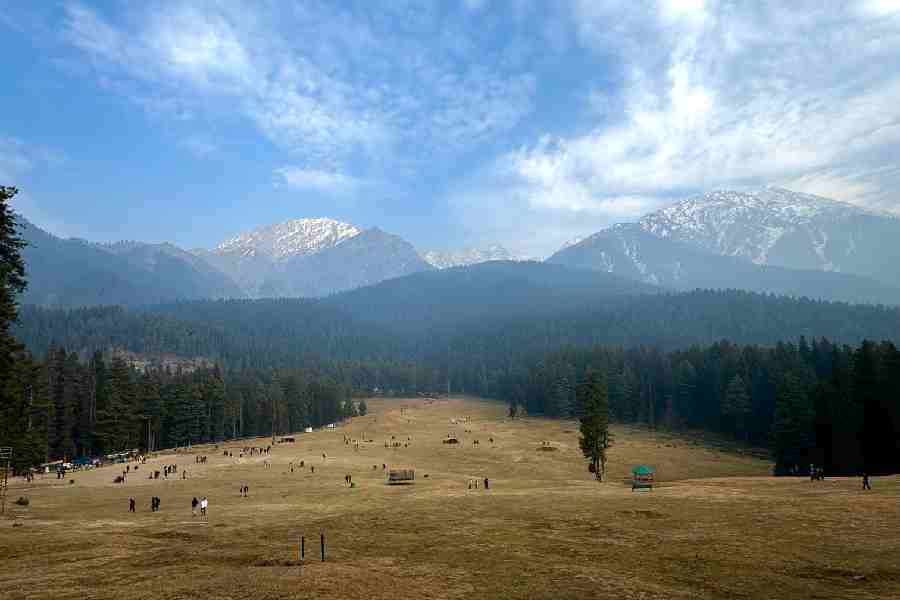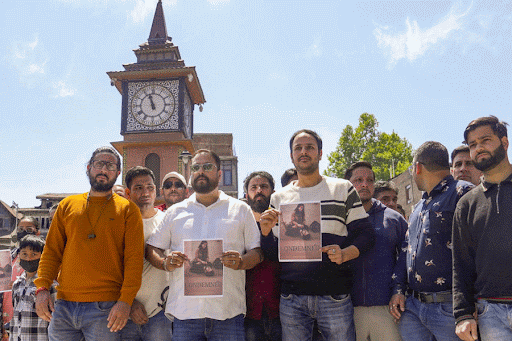.jpg)
The booming voice on the other end of the telephone sounds extremely apologetic. Reason: the long distance conversation we are about to have, has been put off several times.
Sriram Ramaswamy is busy and it is understandable: he's just been elected a Fellow of the Royal Society - a premier scientific academy of the UK and the Commonwealth - an honour only a handful of Indian scientists can brag about. And handling all those congratulatory calls and mails, on top of the work he already does, cannot be easy. Ramaswamy not only heads the Tata Institute of Fundamental Research (TIFR) Centre for Interdisciplinary Sciences in Hyderabad, but also guides a battery of young research scholars. On top of that, he has to leave in a few hours for the Iranian city of Zanjan, 300km northwest of the capital, Tehran. He is one of the key lecturers at a 10-day long spring school being organised there. I apologise for taking up his time, when it is at a premium for him, and immediately get down to brass tacks.
Among other things, Ramaswamy studies what physicists call active matter physics. His contributions have been instrumental in giving shape to this rapidly emerging, yet largely uncharted field.
He is a highly decorated scientist - among the honours that came his way are the S.S. Bhatnagar Prize and the Infosys Prize. He is a professor of physics at the Bangalore-based Indian Institute of Science and is on lien at the TIFR centre.
Ramaswamy and his team have been studying physical laws that govern groups of living things that move together - such as wildebeests (a genus of antelopes) that migrate from Tanzania to Kenya in eastern Africa, schools of swimming fish and flocks of migratory birds. His team, for example, wants to understand how a disturbance created in such a living system would affect the movement of others in the group.
On smaller scales, such active matter systems include collections of swimming or crawling micro-organisms or bunches of living cells and tissues. Experiments with bacteria carried out using his equations show that their movement creates subtle ripples in the fluid in which they move, which in turn leads to the colony arranging itself in complex patterns. This understanding may help medical scientists to know, in the future, how disease-causing bacteria form colonies.
The mechanism he proposes for bacteria moving through fluids applies on a smaller scale to the filaments and motors in a single living cell.
"Living systems do what they do because of and not in spite of the laws of physics. It is therefore important to understand how physical law constrains what biology can do," says Ramaswamy. It is also important to know how the living state is different from other organised states of matter.
Much of our understanding of physical phenomena comes from the study of systems that are in a state of equilibrium. Physicists understand such systems very well. Systems that are not in equilibrium, like the ones that Ramaswamy's team study, are much harder to comprehend.
Gautam Menon, scientist at the Institute of Mathematical Sciences, Chennai, says that the importance of the study of active matter is that it suggests new ways of thinking about how to model living systems. "All living things have energy flowing through them, but earlier ways of thinking about this did not provide ways in which we could model them accurately and make useful predictions," says Menon, who has collaborated with Ramaswamy in the past.
Ramaswamy's work suggests how this can be done. This, says Menon, may have practical applications. "Although his work is largely theoretical, it has practical implications for how we design and understand smaller-scale machines, both living and non-living," he says. For example, if scientists fathom such movements well enough, they can manufacture tiny, nanometre-scale gadgets that can move by themselves following chemical cues or scents.
"We found cool ways of creating artificial self-propelled objects, and flocks, whose behaviours we could control, and showed that these could meaningfully test some of our surprising claims," Ramaswamy says.
It is this cutting-edge work that got him elected a Fellow of the Royal Society. When asked whether he is excited about it (he's the only Indian based in India to be elected this year), Ramaswamy says: "It is gratifying to know that the kind of science my colleagues, students and I do is respected beyond my immediate circle of collaborators."
Ramaswamy has a wide range of interests outside the world of science. He enjoys reading fiction - English and Tamil. Among his favourite writers are Amitav Ghosh, David Mitchell and Chimamanda Ngozi Adichie. He loves to listen to various genres of music, including Carnatic, Hindustani, jazz as well as the songs of A.R. Rahman. However, lately he finds it difficult to make enough time for his other two loves - running and trekking.
Born to the late Ramaswamy R. Iyer, former Union water resources secretary, and his wife Suhasini, Ramaswamy studied at Modern School in Delhi. He went to the University of Maryland, the US, for his undergraduate degree in physics, as his father was then posted abroad. "But, I think life in an Indian academic institution such as St Stephen's College in Delhi or the IITs would have been more stimulating," he says. "Moreover, I completely missed out on all the excitement of campus life during the Emergency," quips Ramaswamy, whose wife Rama Govindarajan is a professor at TIFR Hyderabad. While their elder son Achintya Prahlad is pursuing a PhD in biophysics and neuroscience in Germany, the younger one, Vidur Niranjan, is an engineering student at the National Institute of Technology in Suratkal, Karnataka.
Menon says what he likes most about Ramaswamy is his intellectual honesty. "He never bluffs about what he knows or attempts to gloss over points that are unclear to him. This is how all scientists ought to be, but not everyone lives up to this ideal."
Satyajit Mayor, director of the Bangalore-based National Centre for Biological Sciences, says that the science that Ramaswamy does is of top quality. "He is one of a kind and a real original," he says.

.jpg)









